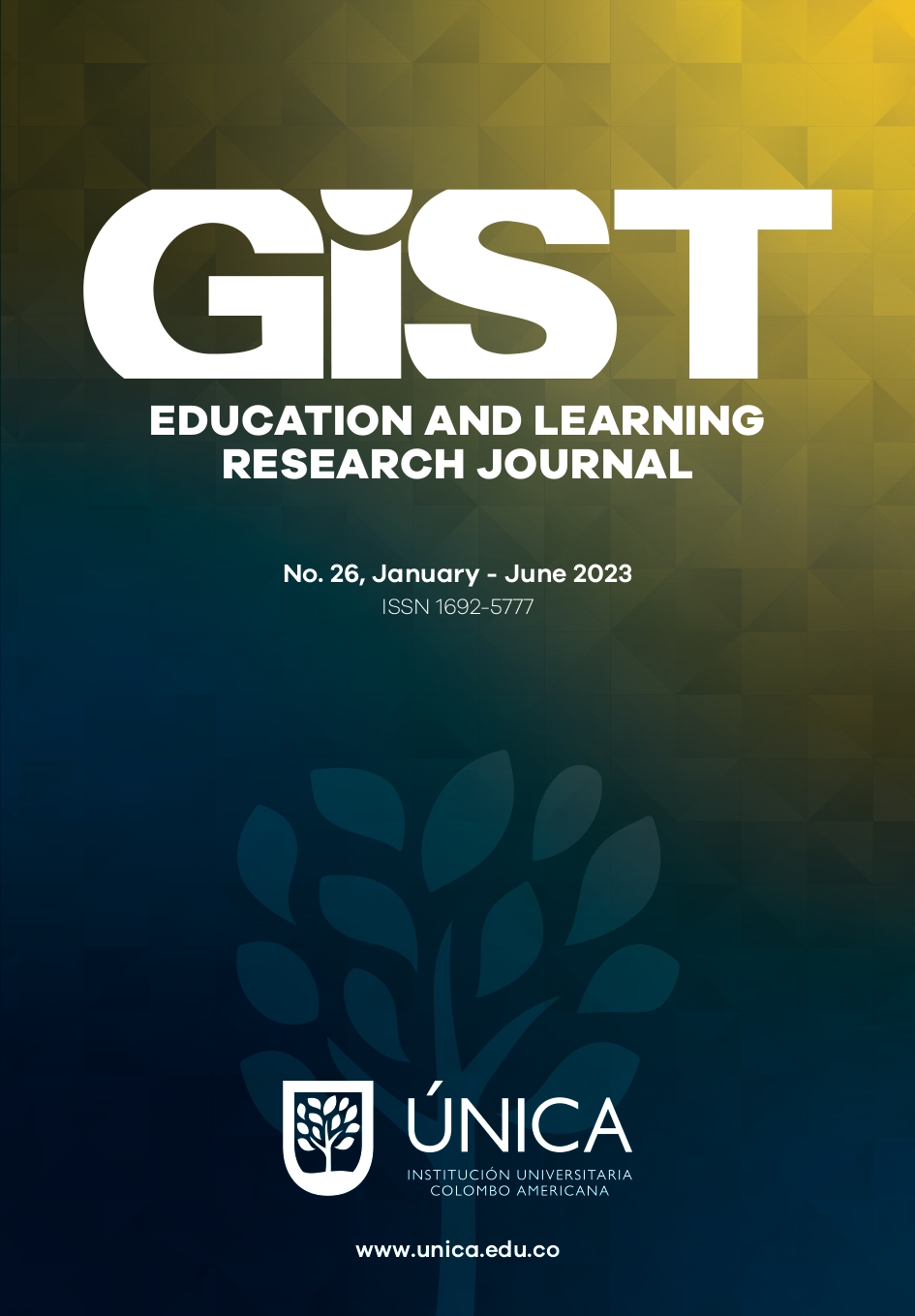The Contribution of Information Gap Activities to Support Honduran Ninth-grade Students’ speaking Fluency
DOI:
https://doi.org/10.26817/16925777.1570Keywords:
EFL classroom, information gap activities, speaking fluency, breakdowns, repairs, speech rate, teaching speakingAbstract
This article corresponds to an action research which explored the contribution of information gap activities to support a group Honduran ninth-graders’ speaking fluency. Their speaking fluency was assessed in terms of speech rate, breakdowns or pauses, and repairs. This study adopted a mixed method approach: quantitative and qualitative. The sample chosen was a purposive sample made up of a group of seven ninth graders who had been learning English in rural context in a public high school in Comayagua for two years, all aged between 14 and 15 years old, with an A1 level.The information gap technique was implemented during seven sessions following the regular topics scheduled for the school term. Data were collected by applying a pre-test and a post-test to assess students’fluency, and results were assessed with an analytic rubric; and their perceptions were assessed by a focus group. The pre and post-test results showed an improvement in participants’ speaking fluency, and these results were in agreement with their positive perceptions. Moreover, participants expressed that information gap activities had impacted positively their motivation and their awareness of mistakes. In conclusion, information gap activities helped learners improve their speaking fluency and might support English teachers in Honduran rural public contexts not to rely upon traditional textbook use and make their classes more motivating and communicative.
Downloads
References
Bhardwaj, P. (2019).Types of sampling in research. Journal of the Practice of Cardiovascular Sciences, 5,157-163. DOI: 10.4103/jpcs.jpcs_62_19 https://doi.org/10.4103/jpcs.jpcs_62_19
Braun, V., & Clark, V. (2008). Thematic analysis: Providing accessible guidance on doing and understanding. Qualitative Research in Psychology, 3 (2), 77-101. DOI: 10.1191/1478088706qp063oa https://doi.org/10.1191/1478088706qp063oa
Burns, A. (2015). The Cambridge Guide to Research in Language Teaching and Learning. (1st ed.). Crambridge: Cambridge University Press.
Decker, A. (2012). How to teach speaking skill? Journal of Education and Practice, 3, 25-29. https://www.academia.edu/1291728/How_to_Teach_Speaking_Skill
Harris, K. (1990). Pair Activities in Beginning Adult ESL Classes. London: Longman.
Harmer, J. B. (2007). The Practice of English Language Teaching, (4th ed.).Pearson: Longman Publishing.
Humaera, I., Jumiati, W., & Safeti, N. (2022). Developing students' willingness to communicate using information gap activities. Knowledge E., 2022,127-137.DOI: 10.18502/ kss.v7i8.10731 https://doi.org/10.18502/kss.v7i8.10731
Jondeya, R. (2011). The effectiveness of using information gap on developing speaking skills for the eighth graders in Gaza Governorate schools. [Master's thesis].Al-Azhar University, Gaza. https://library.iugaza.edu.ps/thesis/96013.pdf
Jones, C. (2020). Teacher trainer and materials writer Ceri Jones explores what it means to be fluent in a language and if it is possible to teach fluency in the classroom. World of BetterLearning. Retrieved on December 10, 2021 from: https://www.cambridge.org/elt/blog/2020/01/22/fluency-can-it-be-taught//
Larsen-Freeman, D. (2003). Techniques and principles in language teaching. Oxford: Oxford University Press.
Linaanti, A. (2017). The Use of Information Gap Activity Technique to Improve The Speaking Skill at the eighth graders of SMP N 10 METRO. [Undergraduate Thesis].Tarbiyah and Teaching Training Faculty. University of Yakarta.
Namaziandost, E., Hashemifardnia, A., Shafiee, S. (2019). The impact of opinion gap, reasoning-gap, and information-gap tasks on EFL learners' speaking fluency. Cogent SocialScience.5.116. https://www.tandfonline.com/doi/full/10.1080/23311886.2019.1630150 https://doi.org/10.1080/23311886.2019.1630150
Nunan, D. (2003). Practical English Language Teaching. Boston: McGraw Hill. https://doi.org/10.1017/CBO9780511667336
Ortiz, R. (2019). The impact of information gap activities on young EFL learners' oral fluency. Profile: Issues in Teachers' Professional Development, 21, 113-125. https://doi.org/10.15446/profile.v21n2.73385
Pagoada, J. (2014). Attitude towards learning English of teachers who are being trained by Secretaría de Educación of Honduras at Escuela Estados Unidos. TESOL Workshop: Language Attitude.1-42. https://vrip.upnfm.edu.hn/files/VRIP/Eje%20investigacion/POA%202015/Tesol%20re search%20attitude.pdf
Putri, A. (2014). Using information gap activities to improve the speaking skills of grade viii students at Smp n 7 Yogyakarta [Undergraduate thesis]. Yogyakarta State University, Indonesia.
Richards, J. (2008). Teaching Listening and Speaking From Theory to Practice. Cambridge: Cambridge University Press.
Rini, R. (2017). The effectiveness of information gap technique in improving students' speaking ability at seventh grade of SMPN 1 KRAS KEDIRI .Universitas Nusantara PGRI Kediri.
Secretaria de Estado en el Despacho de Educación de Honduras. (2003). Diseño Curricular Nacional para la Educación Básica. Comayagüela M.D.C.
Skehan, P. (2009). Modelling second language performance: Integrating complexity, accuracy, fluency, and lexis. Applied Linguistics, 30(4), 510-532.DOI:10.1093/applin/amp047 https://doi.org/10.1093/applin/amp047
Tavakoli, P., Nakatsuhara, F., Hunter, A. (2020). Aspects of Fluency across assessed levels of speaking prociency.The Modernn Language Journal.1, 170-191. DOI: 10.1111/modl.12620 https://doi.org/10.1111/modl.12620
Downloads
Published
How to Cite
Issue
Section
License
Copyright (c) 2023 GIST – Education and Learning Research Journal

This work is licensed under a Creative Commons Attribution-NonCommercial-NoDerivatives 4.0 International License.
| Article metrics | |
|---|---|
| Abstract views | |
| Galley vies | |
| PDF Views | |
| HTML views | |
| Other views | |








